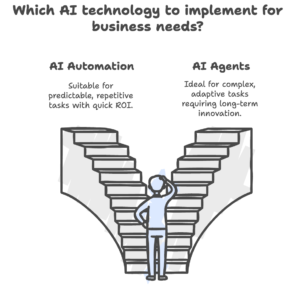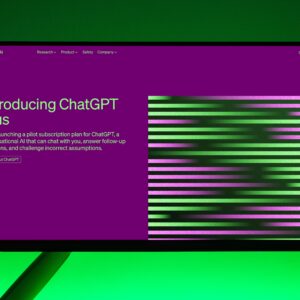
In the rapidly evolving world of artificial intelligence, the Model Context Protocol (MCP) has emerged as a game-changing innovation. Introduced by Anthropic in late 2024, MCP is an open standard that’s transforming how AI models interact with external data sources and tools. Let’s dive deep into what MCP is, how it works, and why it’s becoming an essential part of the AI ecosystem.
What is Model Context Protocol?
Model-Controlled Processes (MCPs) represent a paradigm shift in how AI interacts with digital tools, acting as a universal adapter that lets artificial intelligence directly manipulate and execute tasks in business-critical applications. This innovation eliminates the need for custom API integrations or manual workflows, enabling AI to operate as an autonomous digital workforce.
The MCP Revolution: Key Features
- Universal Tool Connectivity
MCPs standardize AI-to-software communication like USB-C standardized device charging, enabling plug-and-play integration with platforms ranging from Figma to SAP. This removes the need for custom API development that previously consumed 30-40% of AI implementation efforts. - Context-Aware Automation
Unlike basic RPA scripts, MCPs maintain process context across multiple applications. For example, a GitHub MCP can:- Analyze code changes
- Cross-reference JIRA tickets
- Generate documentation
- Update deployment pipelines
…all within a single transaction.
- Self-Optimizing Workflows
Leveraging machine learning techniques from predictive analytics to reinforcement learning, MCPs continuously improve their performance metrics. In manufacturing environments, similar systems have demonstrated 18-25% efficiency gains through autonomous process adjustments.
Transformative Use Cases
| Industry | MCP Implementation | Impact |
|---|---|---|
| E-commerce | Shopify MCP auto-generates SEO-optimized product pages from supplier CSV files | 70% faster onboarding |
| Software Dev | GitHub MCP performs code reviews, identifies security flaws, and suggests optimizations | 40% reduction in PR cycle time |
| Design | Figma MCP converts wireframes into production-ready React components | 5x faster prototyping |
| Operations | Notion MCP transforms meeting notes into structured project plans with resource allocation | 90% reduction in admin work |
Technical Architecture
MCPs combine three critical AI advancements:
- Process Mining Engines that map application workflows using techniques from the ProMoAI framework
- Adaptive Neural Controllers employing hybrid architectures (CNNs + Transformers) for tool manipulation
- Security Sandboxes that enforce zero-trust policies while allowing tool interaction
This architecture enables what researchers call “Process-Aware AI” – systems that understand not just individual tasks but complete business workflows.
Why MCPs Change Everything
- Democratization of Automation
Frontline staff can now create complex automations through natural language prompts rather than Python scripts. - Real-Time Process Evolution
Unlike static RPA, MCPs adapt to changing environments. In manufacturing, similar systems autonomously adjusted to supply chain disruptions with 98% accuracy. - Compound Intelligence Growth
Each MCP deployment contributes to a shared knowledge base, creating network effects where systems improve exponentially through distributed learning.
While early implementations focus on SaaS tools, the protocol is expanding to industrial control systems. Recent trials with Siemens PLCs showed MCPs reducing production line configuration time from weeks to hours.
This infrastructure layer turns AI from a conversational partner into an active participant in digital ecosystems – the missing link for true artificial general intelligence in enterprise environments457.
References:
- https://gradient-ascent.com/artificial-intelligence-controlling/
- https://pmc.ncbi.nlm.nih.gov/articles/PMC8830986/
- https://www.ibm.com/think/topics/ai-in-manufacturing
- https://arxiv.org/html/2403.04327v1
- https://onlinelibrary.wiley.com/doi/10.1002/smr.2743
- https://www.controleng.com/ai-used-to-control-process-manufacturing-operations/
- https://cloud.google.com/discover/ai-applications



